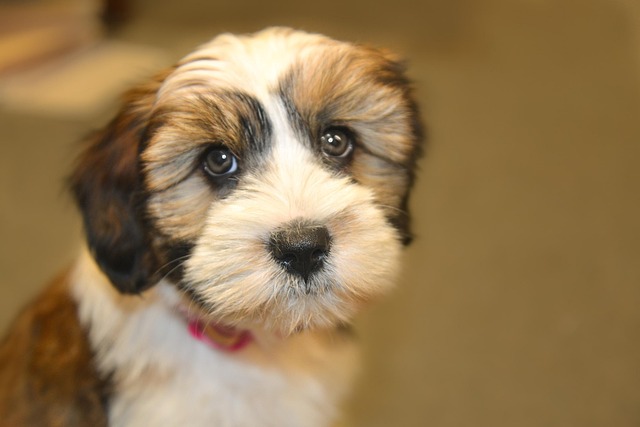
How can I tell if my dog's heatstroke is serious
Let’s be real: It’s a sticky August morning in Los Angeles, and you took your 2-year-old Golden Retriever, Max, for a walk a little later than usual
When we spend every day intimately with our adorable dog at home, watching its agile appearance, furry face, and playful mustaches gently swaying with its movements, have you ever been curious about what these mustaches mean to dogs? Can they be cut off? Before delving deeper into this issue, it may be helpful to calm down and carefully observe the dog's every move. You will find that these seemingly ordinary beards are actually closely related to the dog's life.
From a physiological perspective, a dog's beard is not just ordinary hair. Its scientific name is tentacle, which is thicker and harder than ordinary hair, and deeply rooted in the skin of the dog's face. It is surrounded by rich nerve endings, which are like precise sensors that can sensitively perceive subtle changes in the surrounding environment. It can be said that a dog's beard is an important extension of their sensory system, providing indispensable help for dogs to explore the world.
In the daily life of dogs, beards play a crucial role. Firstly, a beard is a dog's "navigator". When dogs shuttle through dark environments or enter narrow spaces, they cannot rely on vision to determine direction and distance as they do in bright places. At this point, beards play a crucial role as they can perceive the position, shape, and distance of surrounding objects, helping dogs avoid collisions and pass smoothly. For example, when a dog wants to crawl under the sofa to find toys, it will first use its beard to touch the surrounding objects, determine if the space is enough to accommodate its body, and then move on. The ability to perceive space through facial hair is crucial for the safety and freedom of movement of dogs, much like how humans use their hands to touch objects around them to discern direction when exploring in the dark.
Secondly, beards can also help dogs express their emotions. When dogs feel relaxed and happy, their beards usually naturally droop and their state is relatively relaxed; When dogs are in a state of tension, excitement, or alertness, their beards will stretch forward and become even tighter. We can observe the state of a dog's beard to understand its current emotional changes, thus better interacting and communicating with it. For example, when you take your dog out for a walk and encounter other unfamiliar dogs, if your dog's beard stretches forward and its body tilts slightly forward, it may mean that it is alert to unfamiliar dogs and may even launch attacks. After understanding this information, we can take timely measures to avoid unnecessary conflicts.
So, what impact would cutting off a dog's beard have on them? The answer is that this may cause many troubles and inconveniences for dogs. Due to the removal of its beard, the dog loses an important sensory tool and becomes cautious and lacks confidence when moving. The narrow passage that was originally easy to pass through may now make it feel fearful and hesitant because it can no longer accurately judge the size of the space. Moreover, emotional expression can also be affected, and dogs may experience communication barriers with their owners and other animals due to their inability to effectively convey their emotions. For example, when a dog feels scared, it may not be able to convey this signal to its owner through changes in its beard, and the owner may not be able to provide timely comfort and protection.

From an emotional perspective, a dog's beard is one of their unique symbols, just like our human fingerprints, which are one-of-a-kind. Every beard witnesses the growth process of a dog, accompanying it through countless joyful and warm moments. When we look at a dog's beard, our hearts are filled with love and pity for it. Cutting off a dog's beard is like depriving it of a part of itself, which not only affects its body but also damages the deep emotional bond between us and the dog.
A dog's beard is a precious gift bestowed upon them by nature, playing an irreplaceable and important role. As guardians of dogs, we should respect and protect their physical integrity, and cherish every unique aspect of them. Let us accompany our dogs to grow up healthy and happy with love and patience, and create more beautiful memories together. In the future, when we see a dog's agile beard again, we may spend more time appreciating it and feeling the mysteries of life and emotional value behind it.

Let’s be real: It’s a sticky August morning in Los Angeles, and you took your 2-year-old Golden Retriever, Max, for a walk a little later than usual

You're enjoying a summer afternoon at the park when you notice your dog has stopped panting and appears disoriented - their gums are bright red

Let’s paint the picture: You’re in your Denver apartment, watching your 4-year-old Boston Terrier, Ruby, plop down mid-play session with her favorite toy

Many dog owners notice their pets nails seem shorter after regular walks,but how much does this daily activity actually help?The answer depends on where you walk—concrete sidewalks or asphalt streets gently file nails as a dog's paws hit the ground

Most dog owners notice their pup scooting across the carpet at some point, but few connect it to impacted anal glands. These small sacs near a dog’s rectum secrete a scent for marking territory

Most vets agree that regular dog teeth cleaning is key to avoiding painful dental issues later. For healthy adult dogs, a professional cleaning at the vet’s office every 12 to 18 months usually works well.